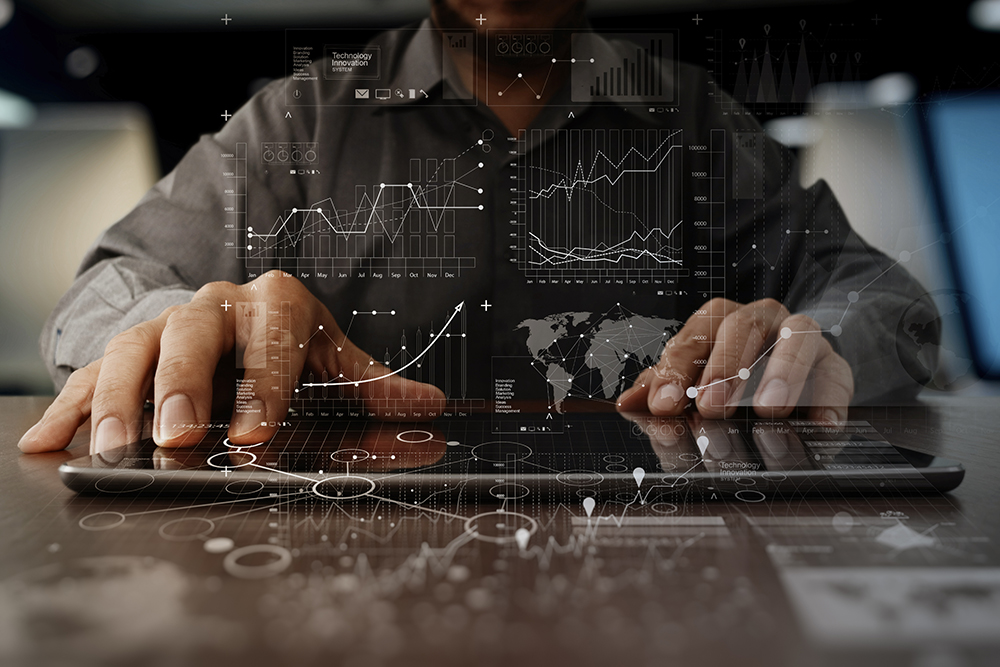Delving into data through retail software

It may not be as hip as smart mirrors or as funky as voice activated payments but make no mistake a major trend driving retail in 2018 is data and the software behind it.
The push is so prevalent, Inside Retail recently noted “the capture, interpretation and ultimate application of consumer data emerged as a key takeaway from this year’s National Retail Federation Big Show in New York. Meanwhile, this data is being acquired everywhere from the Point of Sale to loss prevention analytics.
If you’re delving into data, here are some different ways to capture it and why it’s so critical to the retail experience.
Big data
Big data – it’s a big term with big implications, and it’s one we’ve heard a lot about in recent years. The reason for its popularity is that data enables retailers to better understand what their customers seek, how their stores run, what loss they incur, and then ultimately enables them to create the “customer experience” real-world retail rightfully covets in a changing shopping world.
So, let’s take a look at some specific forms of data available to real world retail and how it’s applied.
mPOS analytics
In many ways mPOS is the cornerstone of real-world retail analytics, and the Cloud-based accessibility it offers is a major driver behind its adoption.
Analytics at the mobile Point of Sale allows stores to accumulate a wealth of essential data that extends from stock at hand through to individual staff sales, customer loyalty information, hourly, daily or monthly sales and more.
This information can be further paired with additional data like traffic counting, store comparisons, and customer relationship software to allow retailers to really drill down into what works and what doesn’t within an individual store or a chain of outlets.
Best of all modern mPOS allows up-to-the minute reporting, meaning store managers and owners have valuable information at their fingertips anywhere, anytime. It can tell you when the shop is busiest, what staff members achieve more sales, and automatically re-order products.
Customer insights
Not so long ago the consumer experience was based on the hunch and observation of what items were in vogue and what products customers sought.
Now there’s a variety of software that offers an intricate insight.
One of the most useful for real-world retail is traffic counting which allows retailers to ascertain how many people enter their store, when. This information can then be cross-checked against the promotions available at that time to understand what’s likely to lure people in.
Then, there are further software options that enable retail to gain an understanding of what catches the customer eye within a store.
These include heat mapping that tracks customer flow around the shop and ascertains where are they stop, or software like Invue Insight which fills the dual role of security software and customer insight.
Invue Insight tracks consumer’s interactions with smartphones and tablets instore, giving retailers advanced data on what products attract attention, and how long people interact with them, while also monitoring security status.
Customer engagement
Just as the online retailer can track what promotions people click on and what offers attract engagement, so too can the real-world retailer, and a great example of this is Microsigns.
Basically, Microsigns is an instore content management and distribution system for electronic displays that fosters and tracks customer engagement.
It allows retailers to quickly change promotions on digital displays, alter pricing and provide consumers with interactive information, but also tracks which content customers engage with and empowers retailers to better understand the selling journey.
Staff management
Staff incur some of the highest costs for any retail organisation, both in terms of employment and stock loss. They are also at the forefront of the consumer experience.
While the retail analytics offered by the POS allow for the store manager to understand which employees make a sale, there are further tools available that drill down and ascertain which products staff have interacted with and whether that results in a sale.
Invue Access Manager is one of these tools. Designed as a loss prevention measure and source of analytics, Access Manager uses smart keys to manage and track which staff have access to lockable displays and drawers.
Under this system, staff members are allocated a smart key with a unique, but changeable, user pin number. They can then be given access to the locks in all areas, just some departments or specific cabinets.
Meanwhile, the software behind it tracks who has accessed what cabinet in real time, offering retailers an insight into what displays attract the most interaction, and giving them the ability to monitor suspicious behavior and stock loss.
The final word
Big data may be a bigger deal than ever before, but retailers have a host of ways to acquire it. From the register to loss prevention and digital displays, a host of day-to-day retail software is offering a wealth of information to improve the customer experience and provide exactly what the consumer seeks.